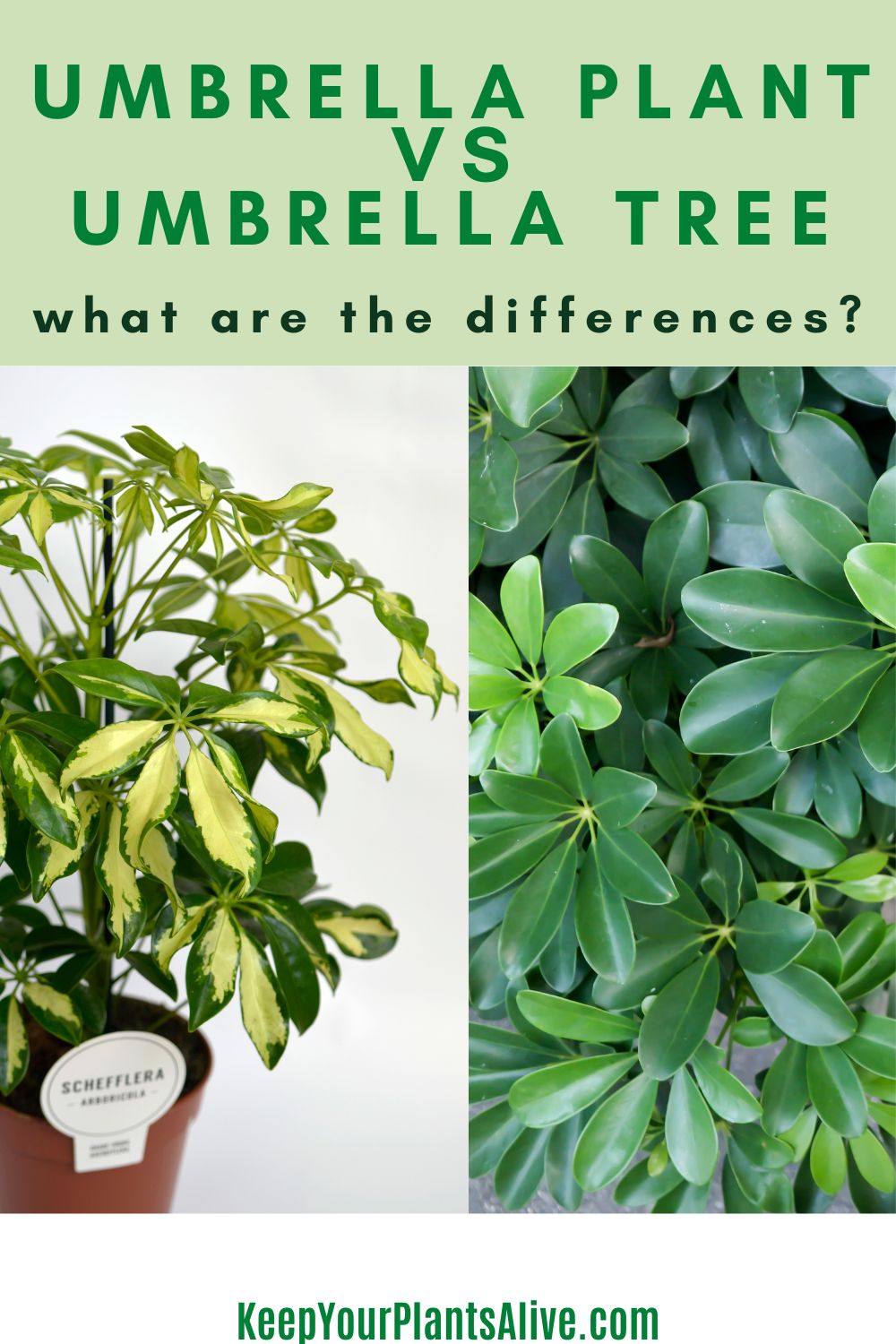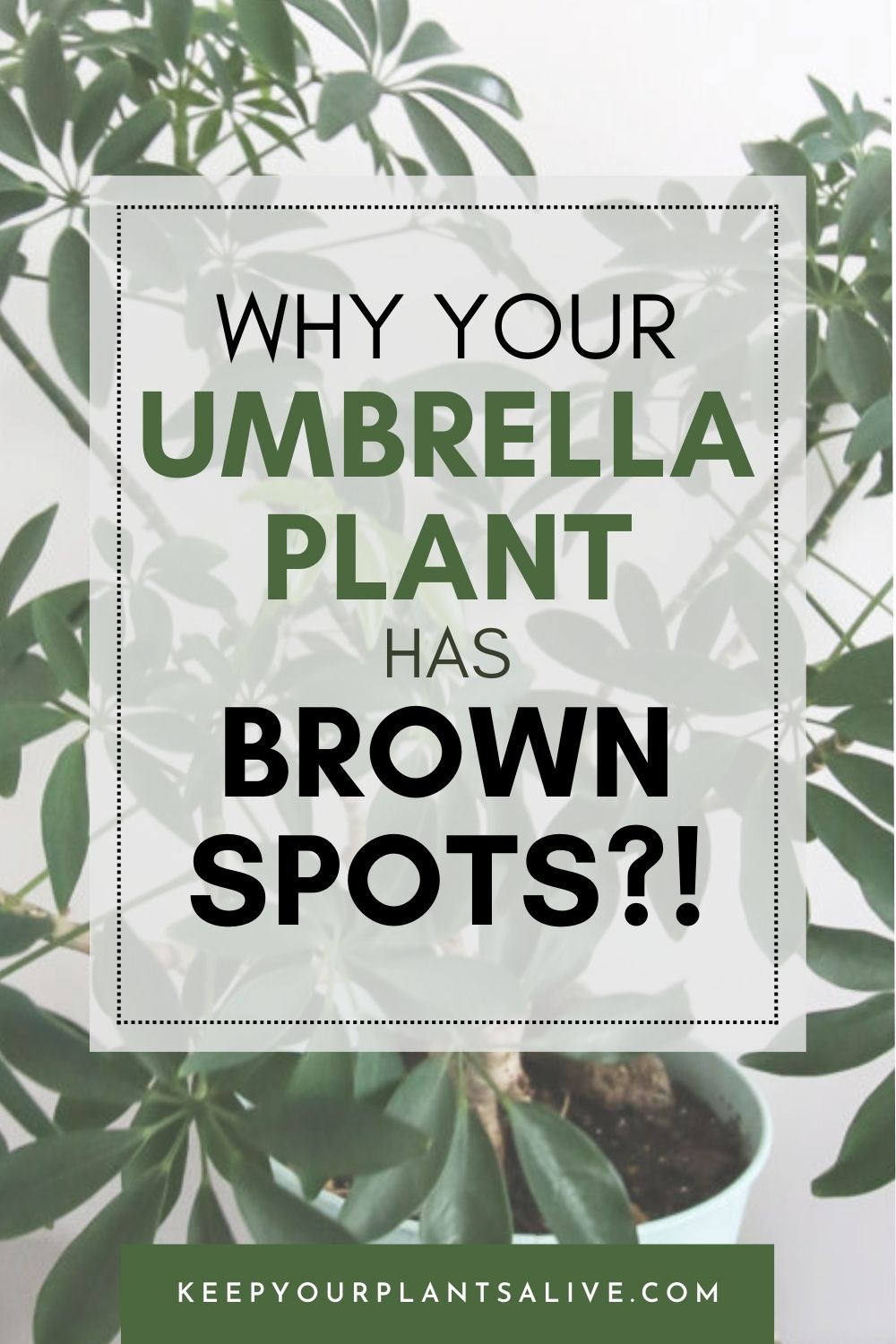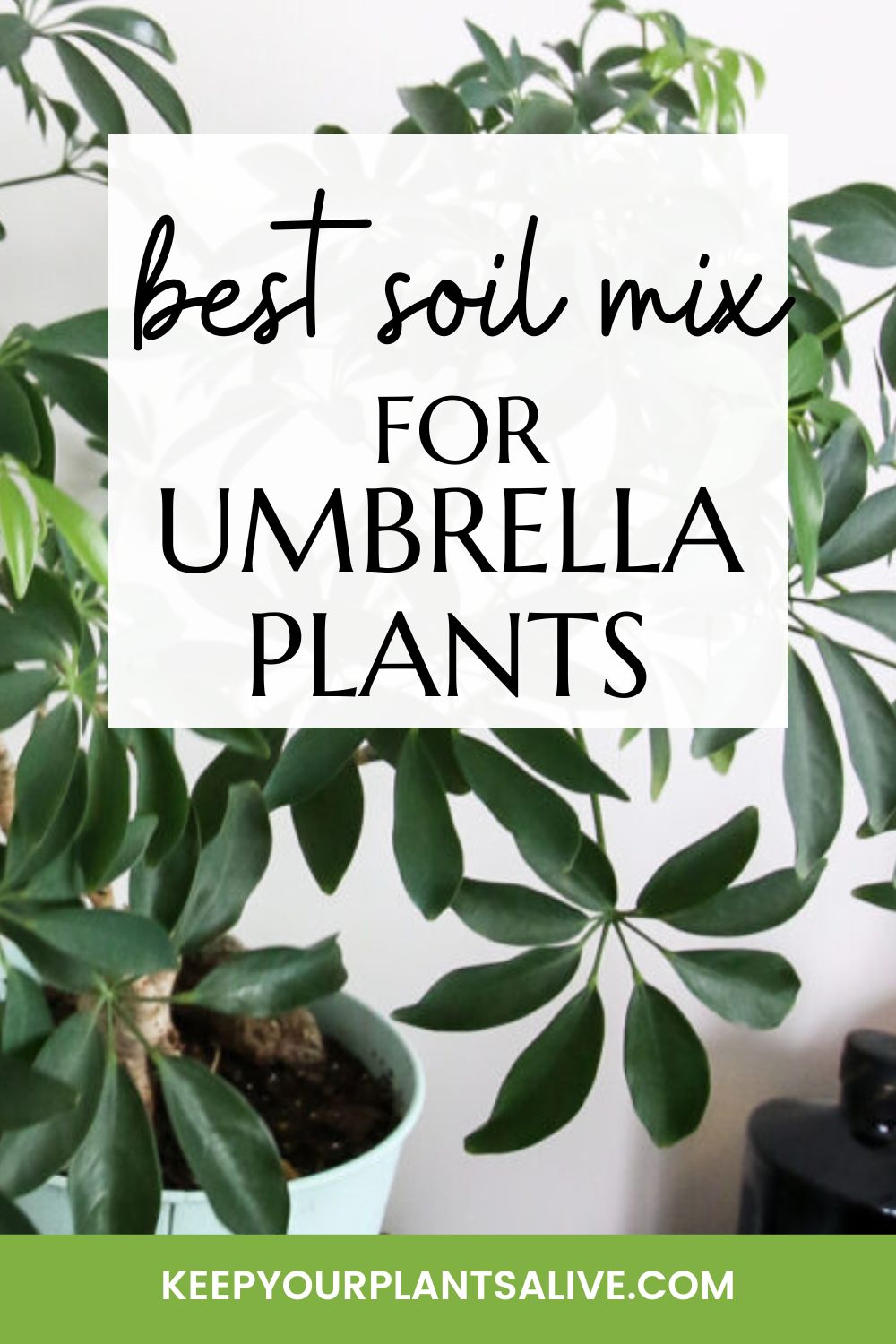Umbrella plants are easy to care for, but it is possible for them to get sick. Here are the most common umbrella tree diseases & how to treat them.
The umbrella tree plant (Schefflera) has gained immense popularity over the years due to its tropical appearance and easy maintenance.
It is an attractive houseplant that needs almost no effort to thrive.
Depending on the type of umbrella tree, it can grow up to 10 feet in height, maybe more, making it the perfect specimen of nature right in the corner of your home.
Still, as sturdy as this plant is, it is not immune to common diseases.
Every now and then, you might find yourself face to face with a health issue that might concern you.
So, we have decided to research this subject for you and present the most common umbrella tree diseases and how to recognize them.
We have a lot to cover, and if you have a Schefflera plant at home, we recommend that you stick to the very end.
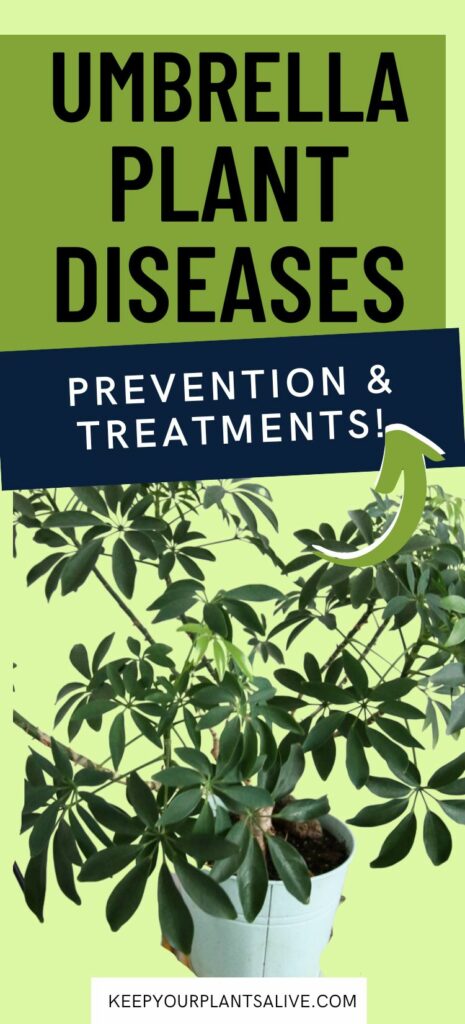
Want more umbrella plant content?
- Umbrella plant care guide
- How to propagate an umbrella plant
- Why is my umbrella plant dying?!
- Are umbrella plants toxic?
- When to repot an umbrella plant
- Can an umbrella plant live outdoors?
- Why is my umbrella plant dropping leaves?
- Why is my umbrella tree turning black?
- Why is my umbrella plant getting yellow leaves?
- Why are my umbrella plant leaves turning brown?
- Why does my umbrella plant have sticky leaves?
- Why is my umbrella plant wilting?!
- How to train your umbrella plant to grow in a specific direction
Printable Umbrella Plant care guide
Join the (free!) KeepYourPlantsAlive+ community to access this exclusive printable plant care guide! Once you sign up, you can right click & save the JPG care guide. Or keep scrolling for more!
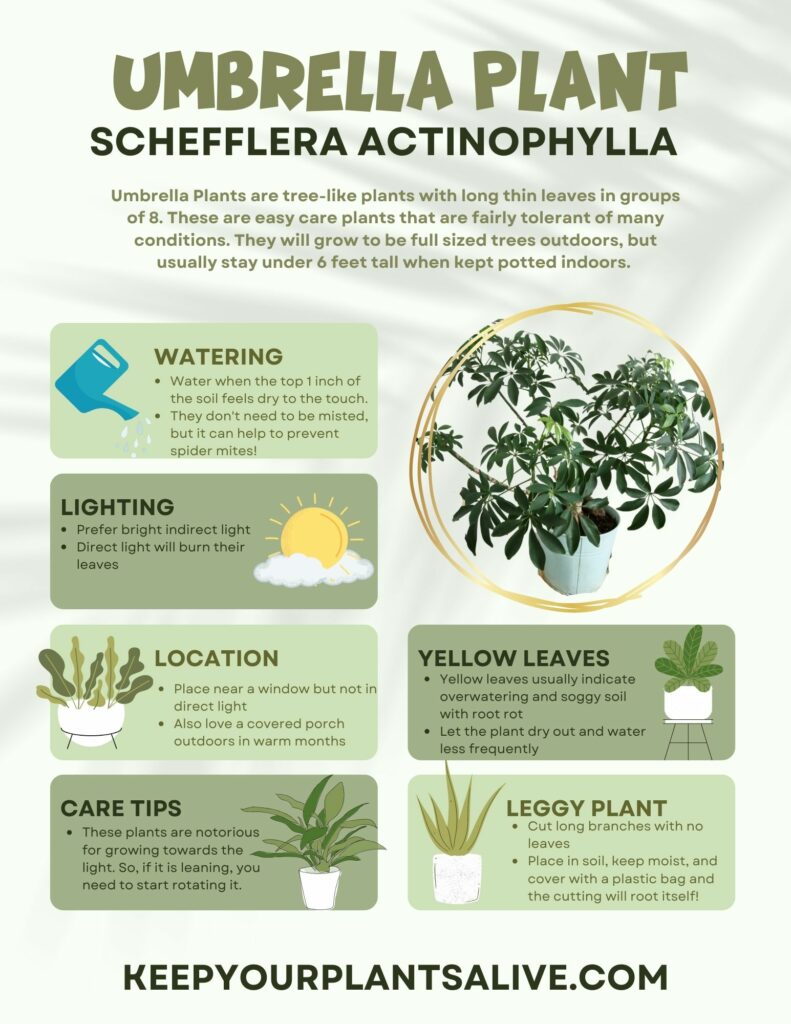
Most common umbrella tree disease
We are exploring some of the most common umbrella tree conditions and finding out the best way to tackle them!
Damping-off
This is a disease that attacks the smaller Schefflera trees very quickly! It leaves lesions on the plant stem and the soil line, contributing to its wilted look.
If the weather is more humid than usual, you might even notice that there’s some mold.
This disease is often mistaken for pests or even overwatering. Unfortunately, there is no cure for it.
Once you discover your umbrella tree has been infected with this one, you should completely discard it.
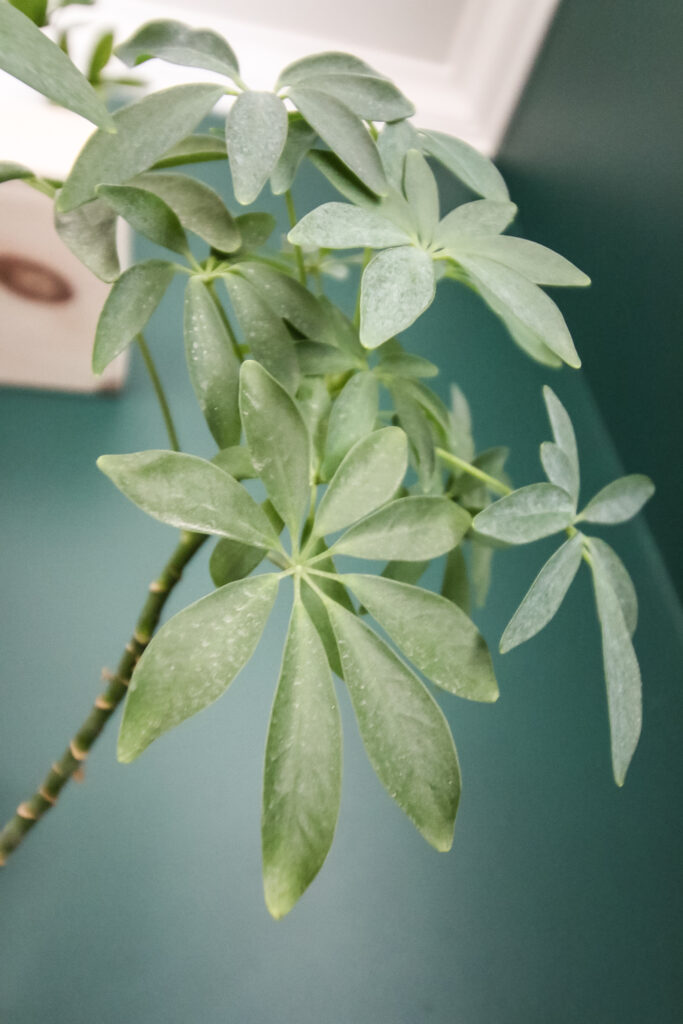
Leaf blight
Moving on to the next one, this is a bacterial umbrella tree disease that infects the margins of the leaves.
Your Schefflera will start having some water-soaked spots on the surface of the leaves, and they will grow larger and darker.
This condition contributes to a wilting plant and overall weakness of the stem and leaves.
The best way to tackle this problem is to prevent it.
Some bactericides are on the market, but none has shown to be fully effective against it.
If you want to prevent your Schefflera from getting leaf blight, don’t let it sit soaking wet, as leaf blight thrives in wet conditions.
Also, after spotting the affected leaves, remove them immediately.
Leaf spot
Leaf blight is a bacterial disease, but leaf spot is a fungal one.
It is a serious disease that attacks the stems and the foliage, leaving black and brown spots behind.
After a while, the leaves fall, and the bare stems are the only thing left of your once-bushy Schefflera plant.
Depending on the type of leaf spot disease, it may either affect the entire plant at once or slowly work its way up from the lowest leaves.
Fortunately, there is a fungicide that can help you get rid of this. Use it appropriately and keep the plant leaves dry to prevent further damage from happening.
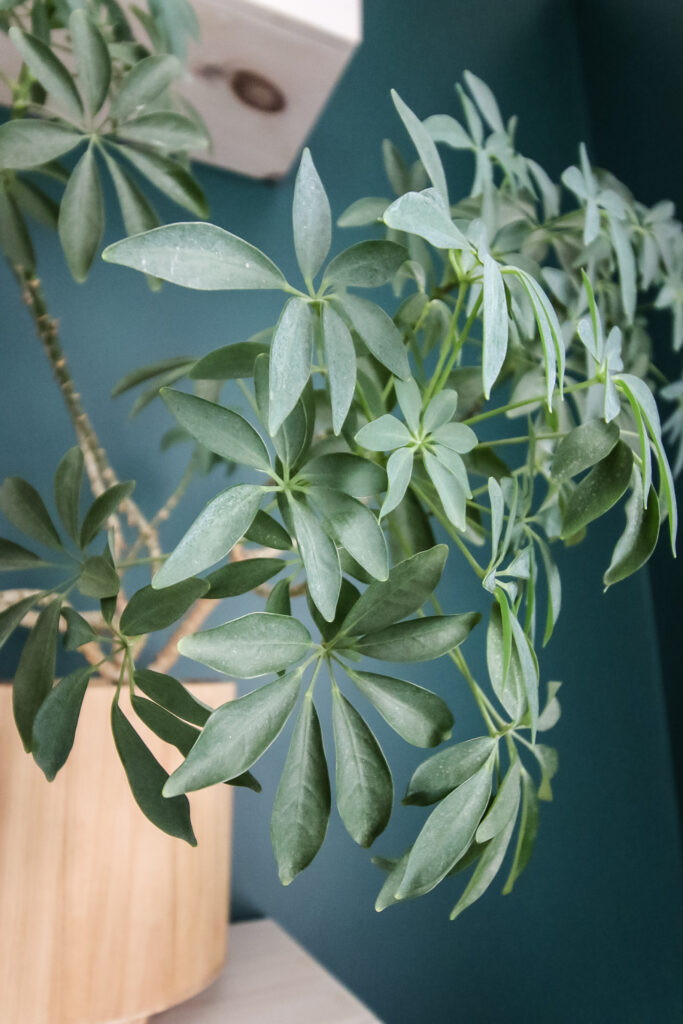
Powdery mildew
Powdery mildew is yet another fungal infection that can damage your plant extensively.
It causes some gray or white powdery substance to form on the leaves of the umbrella tree plant.
As a condition, it takes time to develop. It starts small, and then the powdery spots slowly enlarge until the entire plant is infected.
Powdery mildew is a very common disease– especially during high-humidity seasons, which results in yellow and droopy leaves.
In extreme cases, they even seem deformed and stunted in growth. Being a fungus, this disease feeds on the plant's tissue, removing all nutrients along the way.
Treating this is easy if you have the right fungicide at reach. Also, don’t forget to remove the foliage that has been affected by it.
Lastly, focus on improving the air circulation around the shrub and establishing good ventilation.
Oedema
This is a disease that the umbrella plant is most susceptible to. When the roots of the Schefflera take up a lot more water, more quickly than the plant can absorb, this condition develops.
When too much water is around, dark brown or white blisters appear on the foliage. The entire tree becomes weak, and the leaves become droopy, yellow, and wilted.
Do you want to prevent oedema from happening?
Put the greenery in a spot with a lot of air circulation.
Also, avoid overwatering it. Check the soil conditions before adding water again – if it is two to three inches dry (from the surface), then you can water the plant.
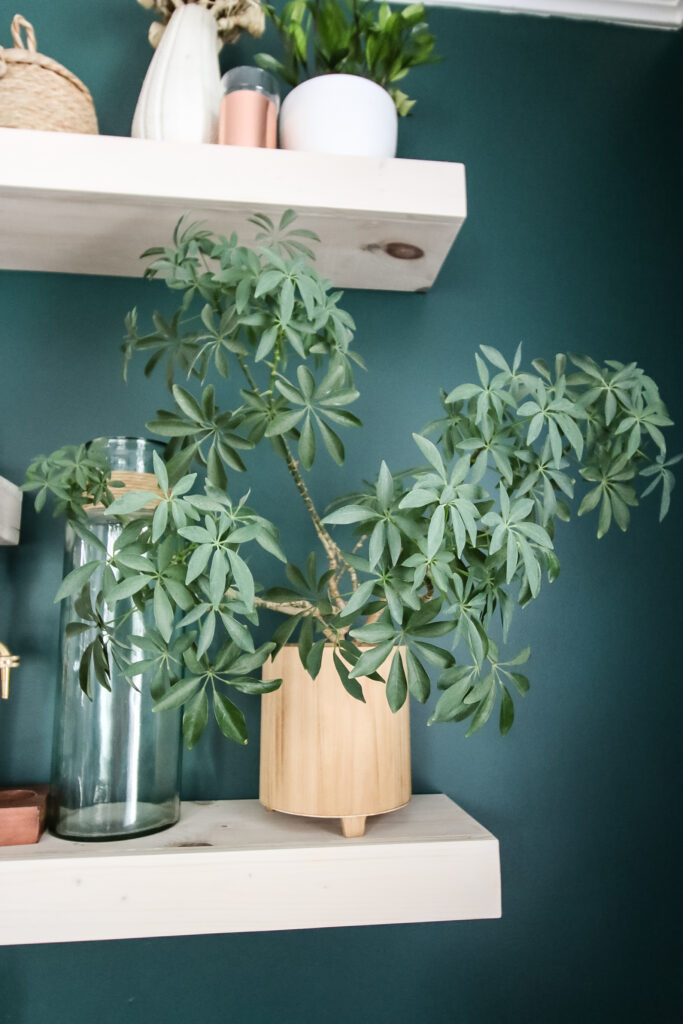
Root rot
Root rot is an umbrella tree disease that most people fear because there is almost no chance of returning once it happens.
Think of root rot not as a disease but as a condition you are facing and need to help your plant recover from immediately.
The main causes of root rot include overwatering your umbrella tree and not providing it with soil that has good drainage.
An easy way to turn this around is to stop overwatering your plant!
If the soil is very soggy, dump it and re-pot the plant in fresh, dry soil.
The same goes for the pot too! Choose one that has big drainage holes, which will allow for the excess water to get out.
However, if the root rot situation is too extreme, then you need to take extreme measures, too!
Replant your entire Schefflera, but do it carefully. Separate the soil from the roots. Get a good pot (preferably a little larger) and check if it has drainage holes.
Once you get a new pot, get a new soil mix, as well.
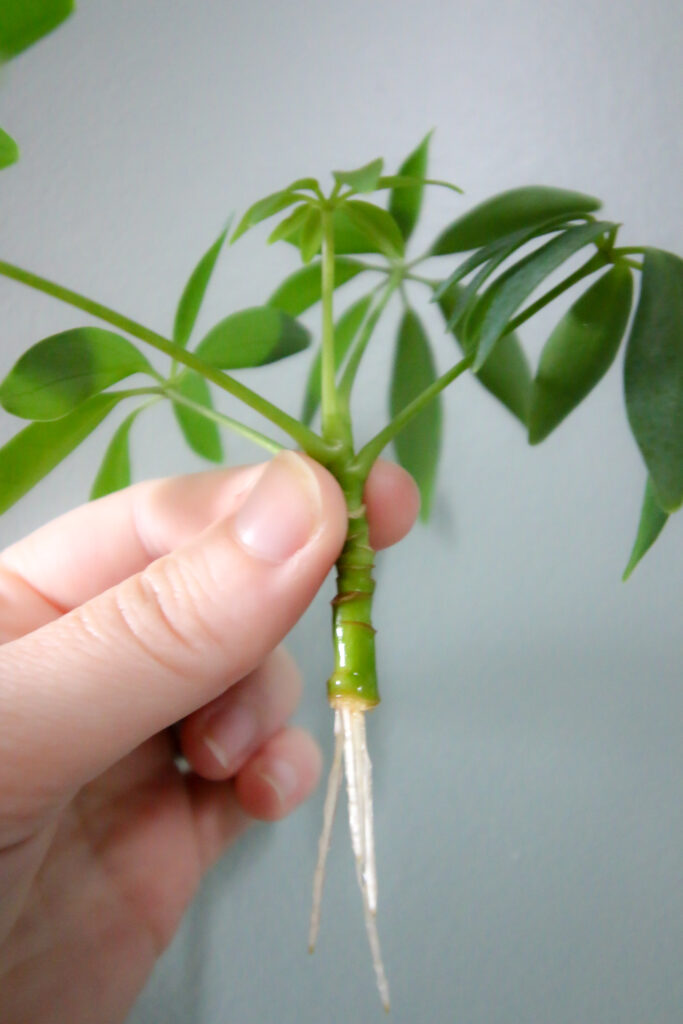
Thoroughly inspect the roots. Every inch you see affected with rot (it will be black and mushy) – cut it out. Leave only the firm, white, healthy roots.
You might be left with only a small root piece, but that’s okay. And try not to worry, as long as there are some healthy roots, the chances are that your plant will recover.
If there are no healthy roots left, clean off your stem, stick it in water, and root it that way.
Managing an umbrella tree disease can take up a lot of time and energy. However, for the sake of your plant, and its health, it is necessary to take the proper steps.
Inspect your plant regularly – this is the kind of active approach to flora management that can give you some wonderful results.
Any more questions about common umbrella tree diseases?
Thanks for reading!


Hey there, I'm Morgan, a houseplant enthusiast from sunny Charleston, South Carolina. Growing up surrounded by my mom's lush orchids and African violets, I discovered the magic of bringing nature indoors. Thanks to the pandemic, I delved deeper into houseplants, discovering their power to uplift moods and transform spaces. I'm here to spill all my secrets, helping you pick the perfect houseplant - and make it happy. Let's keep your plants alive, together! 😊

